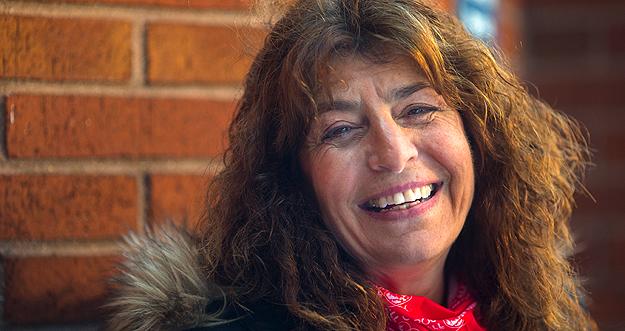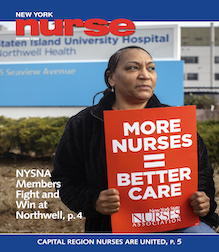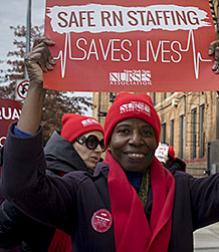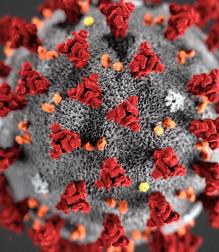
If you’ve been a member of NYSNA for fewer than eight years, you may not know our unique history. In 2011, an insurgent slate won a majority of seats on the Board of Directors. This revolution, led by a Rank and File Caucus, NY Nurses United, finally gave staff nurses a voice after 100 years of being silenced.
We drew inspiration from a small, low-budget organization: the Association for Union Democracy (AUD) and its amazing cofounder, Herman Benson (who is now over 100 years old). We learned about rank-and-file unionism and social justice unions through our contacts in Labor Notes and their “Troublemakers” conferences, where we met longtime activists from Teamsters for a Democratic Union and the Chicago Teachers Union, among many others.
2012 a turning point
We looked at models of unions that developed structures and fought against the odds, from California (National Union of Healthcare Workers) to Puerto Rico (Puerto Rico Teachers Federation). We received solidarity and critical support from progressive nurses unions, especially National Nurses United and the Massachusetts Nurses Association.
On May 17, 2012, we assembled the largest gathering ever, at the Javitz Center in New York City, changing our bylaws so that nurse managers could no longer dominate our union. Later that year our convention voted to withdraw from the American Nurses Association (who had already suspended us, unhappy with our electoral success), freeing up over a million dollars that we could instead spend on supporting staff nurses across the state in their struggles.
As the healthcare crisis escalated, we fought hospital closings, budget cuts aimed at the poor, marginalization of the uninsured and underinsured, and fought to save public health institutions, as well as for universal healthcare and safe staffing ratios in the legislature. We expanded our advocacy to include the struggles to alleviate the social determinants of health: poverty, poor housing, environmental injustice, lack of access to care, food insecurity, racism and all forms of discrimination.
We created a rigorous program of shop steward training, educating over 2,000 nurses in a few short years. We began the complex transformation from a union that focused on service (not necessarily quality service) by staff reps to one that educated members to fight directly with the boss. We fought for and won superior contract agreements and we organized new bargaining units. We formed coalitions with labor and community to unite around common goals.
We reached beyond our comfort zones, embracing the Climate Justice movement, recognizing the deleterious effects of Global Warming on our planet and its people. And we developed a volunteer disaster network to intervene in times of crisis among populations affected by extreme weather events, motivated by our historic dedication to such victims in our own regions.
A vision of democratic inclusion
Our vision to become a union that embraces democratic inclusion of all members, allows for both autonomy of local units and collective functioning, and that fights relentlessly against oppression on the job and within the broader community has been met with fits and starts along the way. While we can all agree on a broad mission statement, implementation of that vision can be a rocky road.
Challenges toward forming “a more perfect union” are persistent. First and foremost is our orientation to organization. We are raised and educated in a system that promotes self-interest and personal power. Worker organizations like unions cannot thrive if members are unable to embrace the concept of “the collective” as opposed to individual gain.
NYSNA members—and particularly NYSNA leaders—have to constantly reflect upon our motives and actions: Are we functioning for the greater good? Are we accepting the rights of members to express all opinions, even unpopular ones? How do we determine what takes priority? Are we sacrificing democracy for the sake of expediency? Or are we losing focus, distracted by multiple interests and concerns?
There is no blueprint that allows us to follow a smooth path that confronts these contradictions effectively. Even the best plans can go awry. Rank and file avenues for input, honest self-examination, a commitment to educate ourselves beyond our own circles, and, ultimately, respect for the richness and variety of views our members bring to the table—these are among the values that allow any structure to nourish itself and grow.
We welcome your ideas about how to become better at what we do. Write to the NYSNA Board via Jeremy.markman@nysna.org. Indicate in the subject, “To the Board of Directors.”




